Ceiling suspension mounting#
Step 1 – Securing the ceiling suspension pipe#

Interlace the incoming conductors through the pipe which servers as the clock suspension. Secure the ceiling suspension to the ceiling using 4 wood screws of 5 mm diameter.
Step 2 – Unlocking the clock#
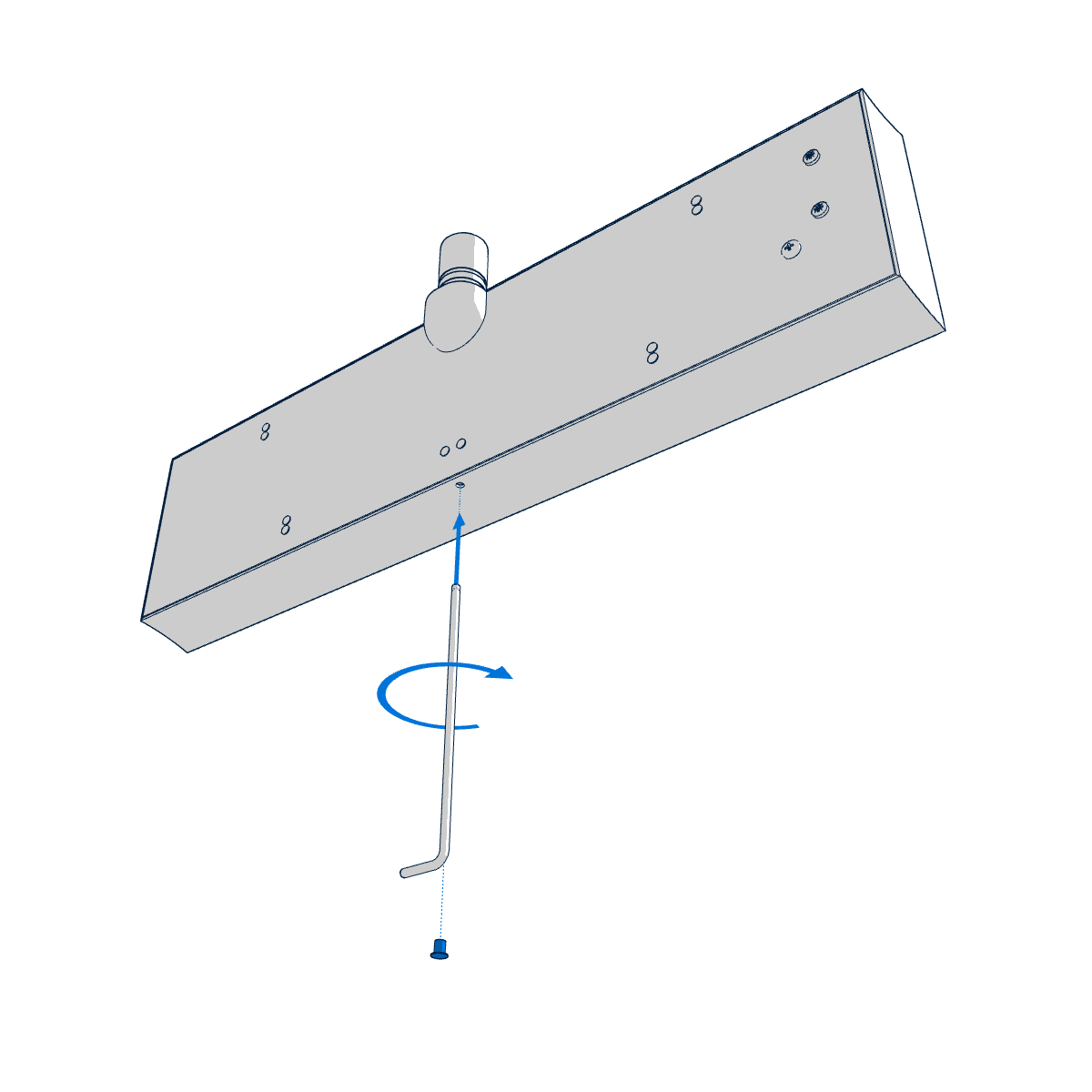
The frame is fixed using two suspensions (above) and two sliding springs (bottom). The frame is locked by frame catch from the bottom side of the frame.
Remove the blind cap from the opening and insert the Allen key into the opening. Turn the key softly in clockwise direction to unlock the frame catch.
Note
Models DC with digit height 57, 75 and 100 the frame catch is unclocked (the screw is already screwed in) when the clock is delivered. The is no need to remove the blind cap and insert the Allen key.
Step 3 – Removing anchoring plate#
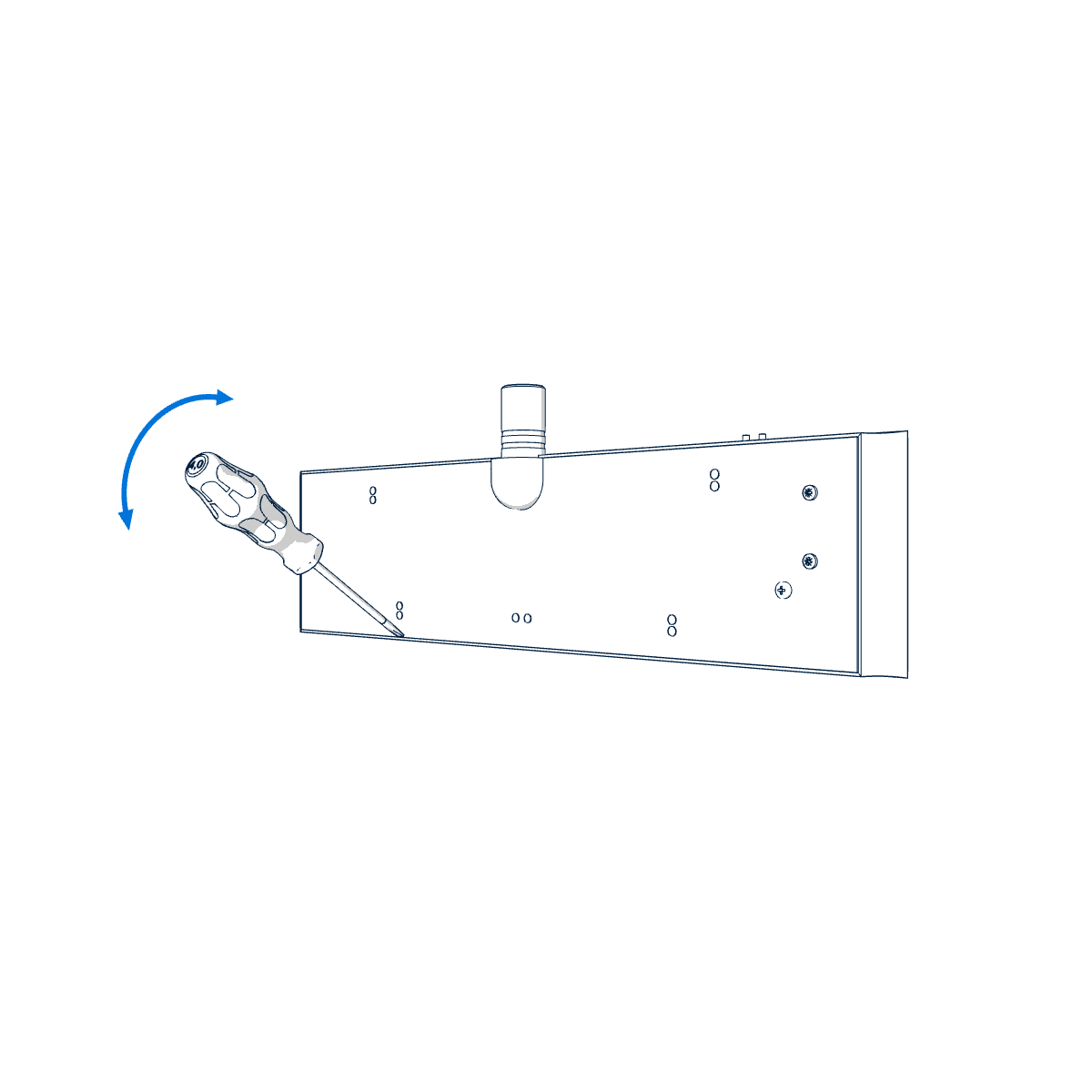
Lift‑off the anchoring plate using a screwdriver inserted in between the sheet and the frame at the sliding spring point on the clock bottom side.
Step 4 – Fixing the anchoring plate to suspension pipe#
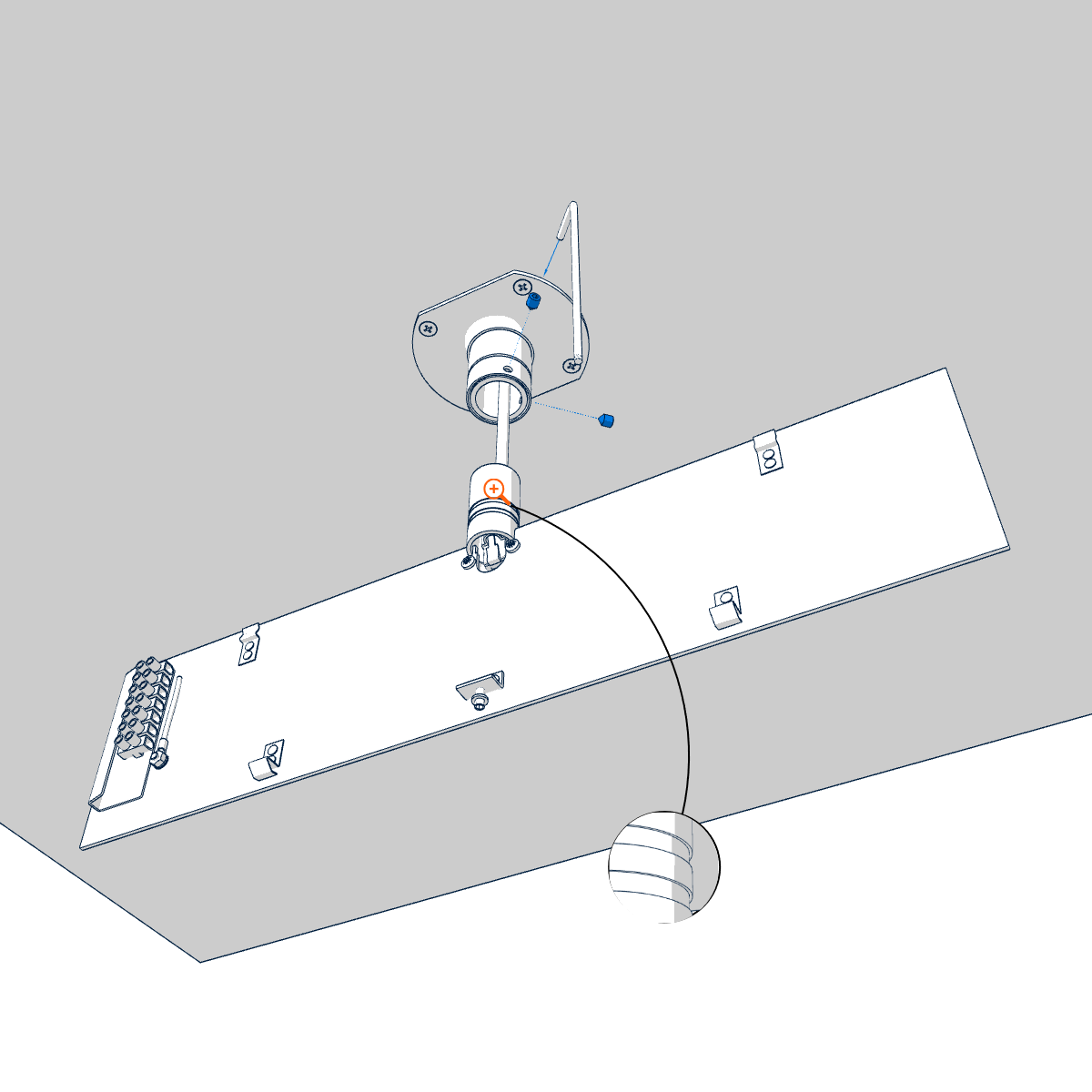
Interlace the incoming conductors through the pipe insert on the anchoring plate, to the side which finds itself to the opposite of the terminal board. Slip‑on the plate onto the suspension. Fix the connection by tightening the screw using an Allen key.
Caution
The screws must fit into the upper groove on the pipe insert; otherwise, it will not be possible to mount a display part onto the anchoring plate.
After mounting the display part, it is possible to elevate the clock by securing the anchoring plate in a manner where the screws fit into the lower groove on the pipe insert.
Interlace the incoming conductors through the opening located next to the terminal board and connect the conductors to the terminal board on the anchoring plate, in accordance with the descriptive nameplate. Give an appropriate shape to the conductors of cut them off at a length which does not obstruct the mounting of the clock onto the anchoring plate.
Step 5 – Connecting conductors & connectors#
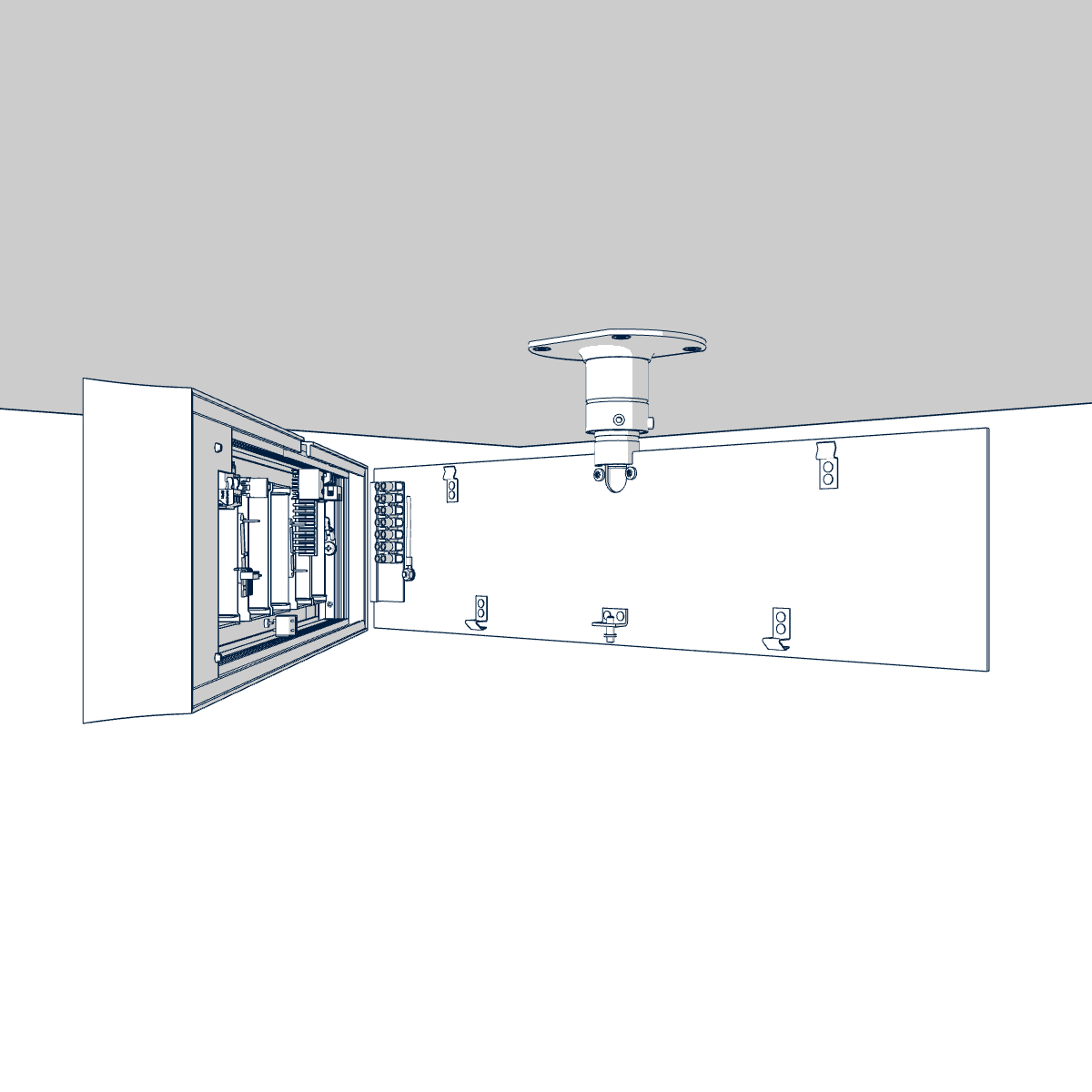
Caution
For LGC variant, configure the position of DIP switch according to used synchronization signal (applies only for DCF, MOBALine, polarized impulse line or IRIG‑B).
Navigate to Clock Operation chapter > Non-Network Clock Operation chapter to get detailed info about connection of various synchronization sources and receivers.
Mount the connectors to the cable of the temperature sensor, to the keyboard cable, Ethernet cable or the RS-485 interface connectors if these have been delivered.
Step 6 – Suspending the clock onto the upper springs#
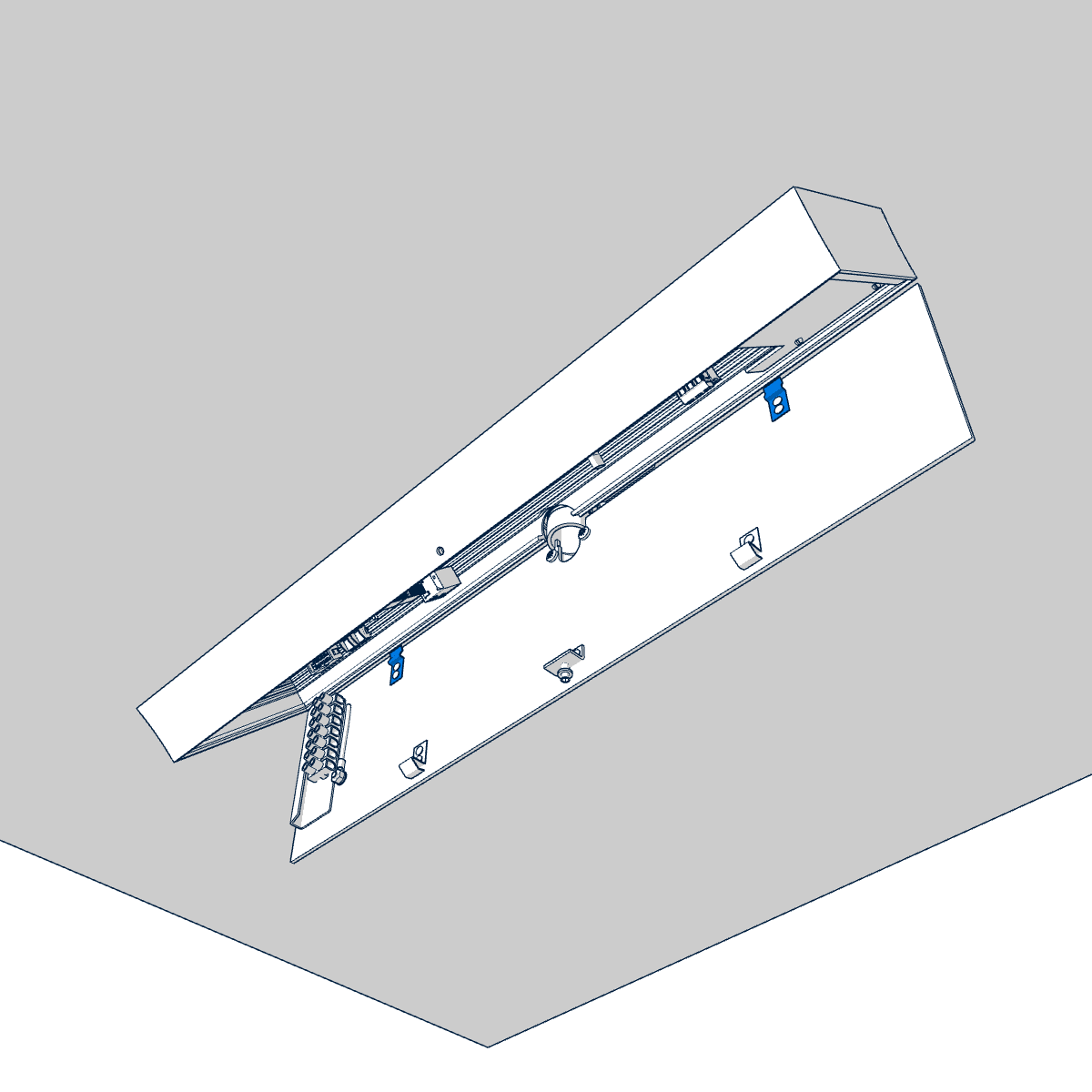
Put the clock opposite to the anchoring plate and suspend it onto the upper springs.
Caution
Care should be taken when placing the cables between the frame edge and the anchoring plate, so an not to nip them.
Step 7 – Snaping the clock onto the anchoring plate#
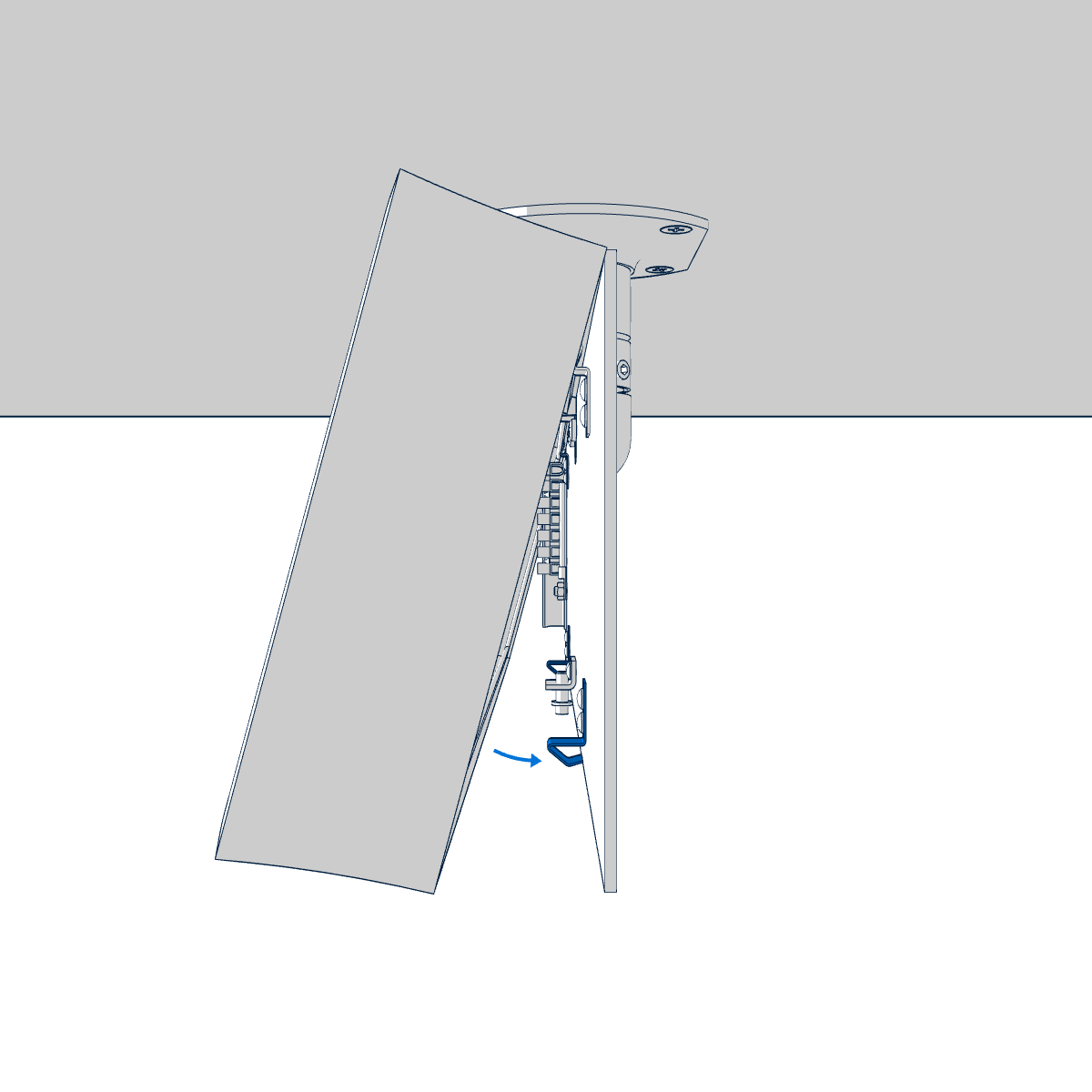
Snap the clock in onto the springs by pushing on the lower part of the frame.
Check whether the anchoring plate on the sides fits exactly into the groove in the clock frame.
Step 8 – Securing the clock#
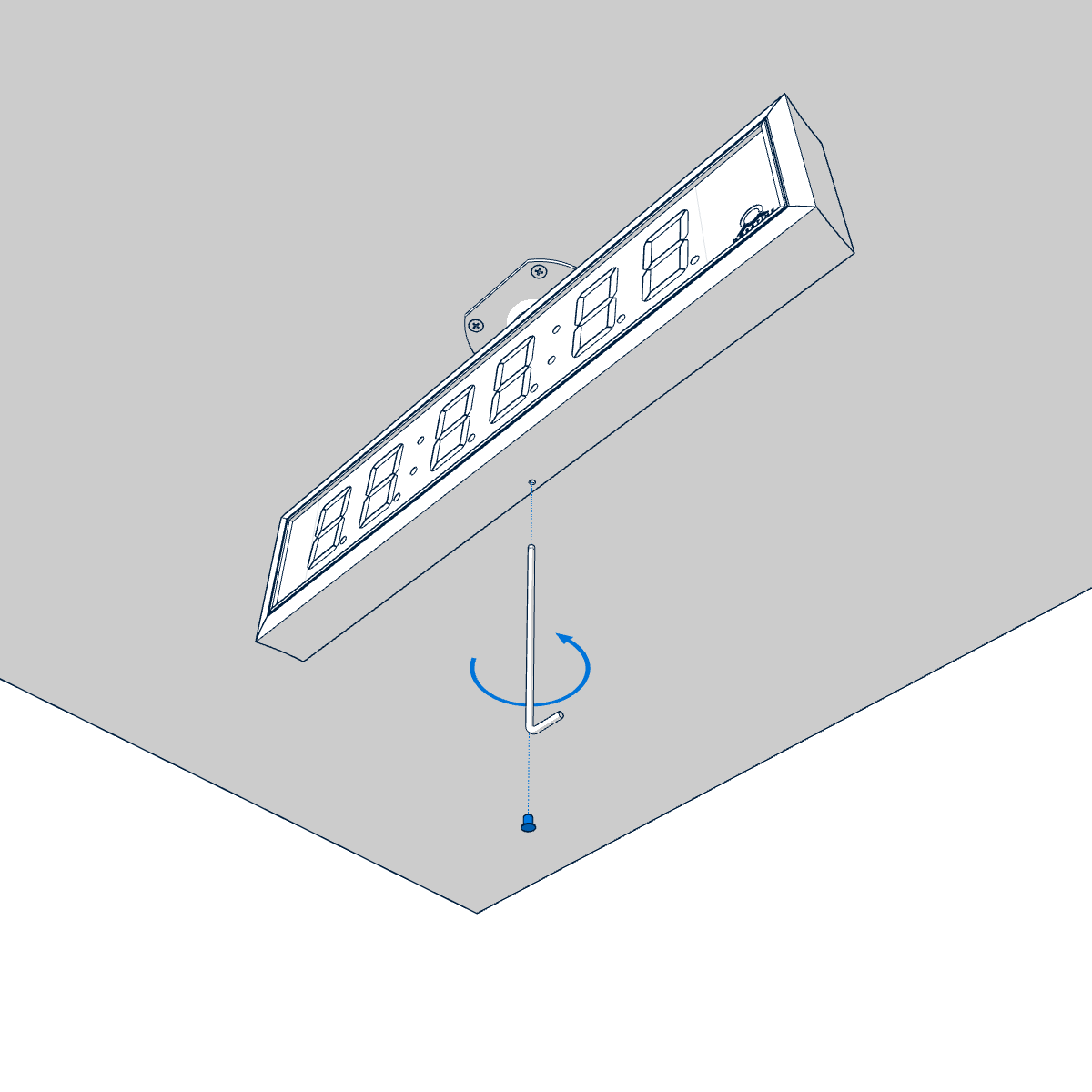
Remove the blind cap from the opening on the clock bottom side.
Insert Allen key into the opening on the clock bottom side. Turn the key softly in anticlockwise direction. The frame catch will snap in.
Replace the blind cap on the opening.
To dismount the clock, use reverse procedure.